Train Tall, Not Tucked
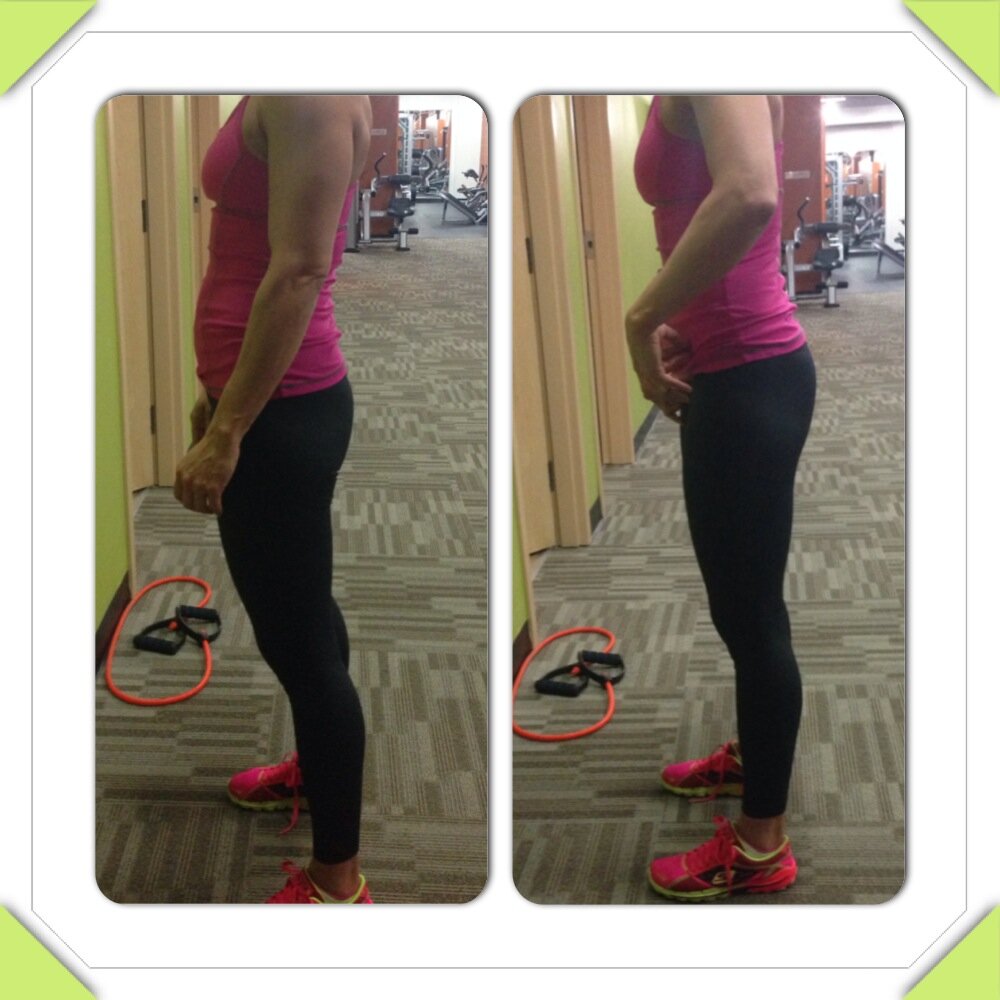
Dan Pfaff, track and field coach extraordinaire, says: “I believe strongly that mechanical efficiency should drive training, and that mastery is key. If you want healthier, more confident athletes, make them more mechanically efficient.”
Katy Bowman, biomechanist, engineer, and anatomist, says: “Alignment matters because load matters. The load is not the weight. The load is how your tissues adapt to the weight.”
I read a Dr. Stuart McGill quote as well that got me thinking about training the glutes and lower body specifically. This is from An Interview with Dr. Stuart McGill, Part II by Chad Waterbury. Dr. McGill says: “It doesn’t matter how much one can bench press (hip thrust?) because when standing (walking, sprinting, jumping?), you can only create a push force with a magnitude of half your body weight. Furthermore, the force development is limited by the ability of their torso and abdominal musculature to prevent twisting motion.”
Everything starts with movement. Good movement needs good alignment. Good alignment leads to biomechanical efficiency which leads to optimal development of neuromuscular qualities.
So I want to challenge a couple of ideas about glute and lower body training specifically, with respect to two factors: alignment (our bones) and tissue load (how we load the muscles through alignment of the bones).
Those ideas are: To train the glutes most effectively, or strongly, we should aim to squeeze them as hard as possible and posteriorly tilt the pelvis to get the best glute activation.
The hip thrust and variations thereof are training you for speed and power in the lower body.
Training the glutes in isolation is significant to athletic qualities like speed and power.
Well, yes and no.
I have a couple of problems with this.
1.) I’m seeing a lot of low-back rounding to go along with that “posterior tilt” in the name of getting better glute activation. I’m not sure from an alignment and biomechanical standpoint that this is actually structurally healthy, especially in a standing position. I don’t think posteriorly tilting the pelvis to get “better” glute activation is a good idea unless true APT is the problem, and then CUEING posterior tilt brings them closer to neutral. I think EMG doesn’t matter in this when so-called stronger contraction of the glutes is not relative to pelvic position and alignment. Stronger contractions mean what exactly? Does it translate into strength specifically? Does it translate into the ability to move powerfully, explosively, or agilely in an athletic role? I’m not convinced.
2.) To train the glutes functionally, we should use them in the role they are intended: keeping the pelvis “untucked” enough to allow proper pelvic alignment and therefore make hip extension/flexion/rotation rather effortless – that “hip mobility” we are all chasing. This doesn’t mean that hip thrusts, glute bridges, and the like are bad. To the contrary, I love them; however, I think we need to add to the bigger picture that is movement when discussing recommendations for training. Glutes are that important. This is a good quote from Team USA’s Synchronized Swimming website that I thought summed up the idea well:
“Most people can’t budge their hips at all with their pelvis posteriorly tilted. Which means they can’t do it while walking either. Which means no loaded hip extension while walking, which means very little work performed by the glutes.” (1)
So why try to strengthen them that way exclusively? How the body loads itself is significantly different standing than it is prone. This doesn’t mean hip thrusts don’t have value – to the absolute contrary! I just am uncomfortable with some important parts of the picture I see go missing in a lot of discussion about this.
This study (2) titled “Activity and functions of the human gluteal muscles in walking, running, sprinting and climbing” says:
“We hypothesized that 1) GMAX (glute max) EMG activity would be greatest during sprinting and climbing and 2) GMAX EMG activity would be modulated in response to altered forward trunk pitch demands during running. We found that GMAX activity in running was greater than walking and similar to climbing. However, the activity during sprinting was much greater than during running.”
Last I checked, no one was sprinting while posteriorly tilting their pelvis to get their glutes to fire. And neither were they thinking about it. We don’t walk around (daily repetitive hip extension anyone?) with a posterior tilt or what I call saggy pelvis. (Well, we shouldn’t at least!)
Here are some client examples of what I call saggy pelvis. I see this even in very “strong people” who train.
Pic 1 – Saggy pelvis
Pic 2 – Neutral pelvis (or the start thereof). In the case of planks, saggy passive pelvis versus actually making the core, glutes, and legs musculature fire to hold the body in a plank properly (again, or the start thereof) aka active versus passive. Can you visualize what happens when I cue them to “squeeze the glutes” in movements? Their body will default to what it knows, and you WILL get glute activation, but not the kind you really want in the long run.
Even good trainers I know can’t seem to distinguish between hyperextension of the low back, rib shear, spinal shear, anterior tilt, posterior tilt, or lumbar rounding. Most can’t seem to see the difference between squeezing the glutes and low back rounding! Or in hyperextension versus neutral back/pelvis with a big ass!
A big round ass on a neutral pelvis and spine will look impressive! It’s not lordosis. Same thing with “squeezing the glutes” in posterior tilt. You want to keep the joints neutral, so sometimes cueing aggressive “glute squeezing” is not the answer if alignment as a whole is missing.
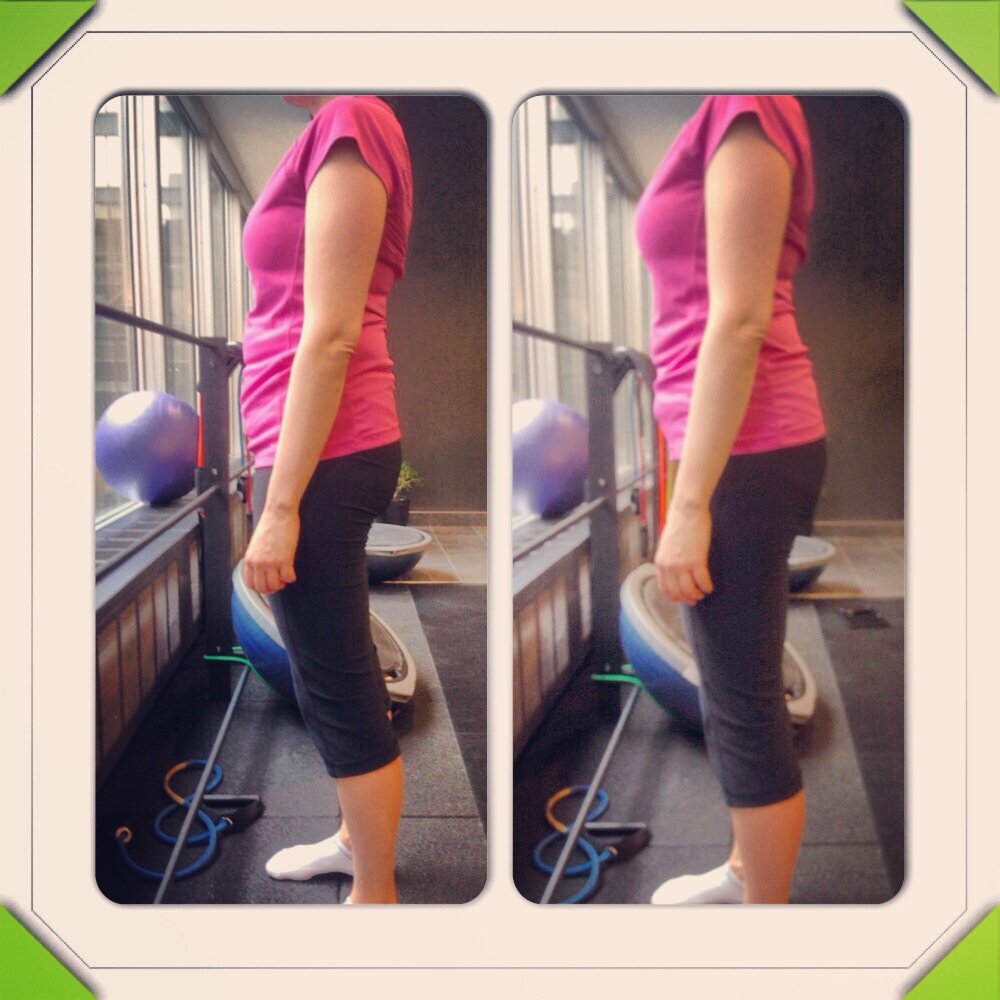
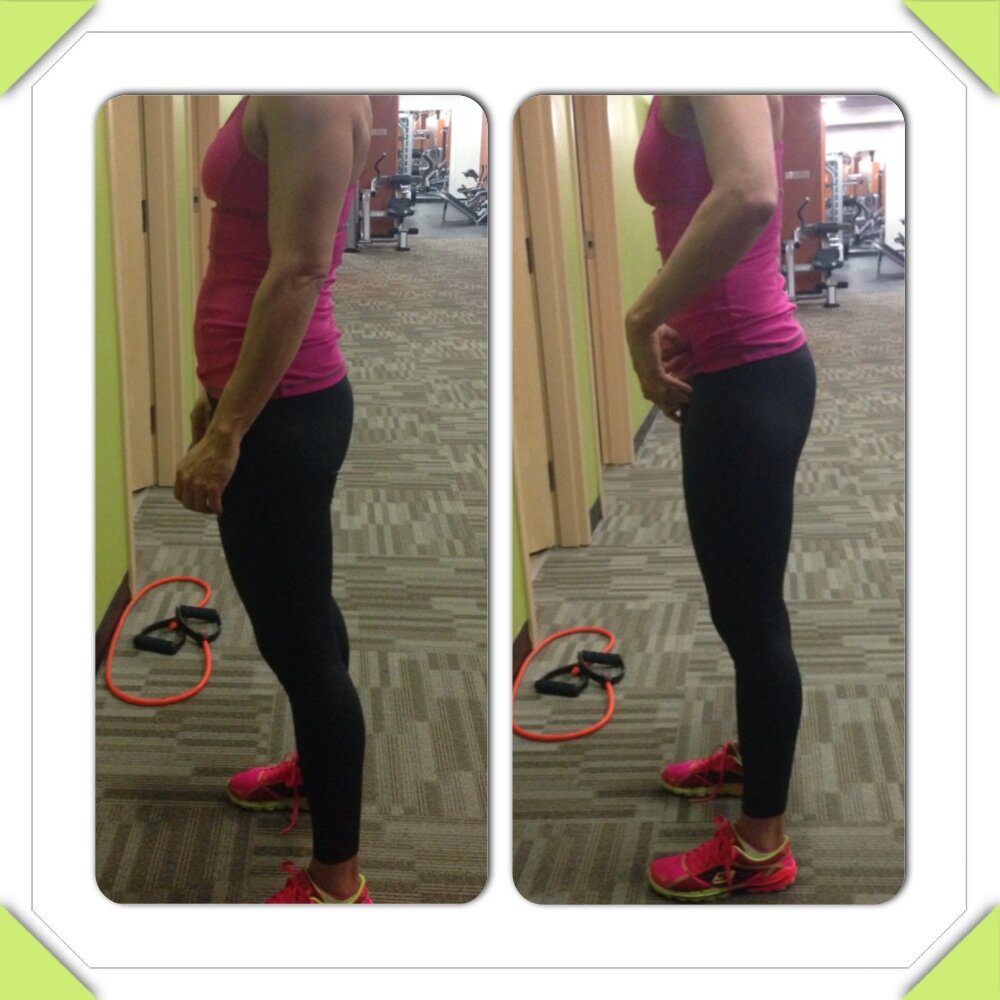
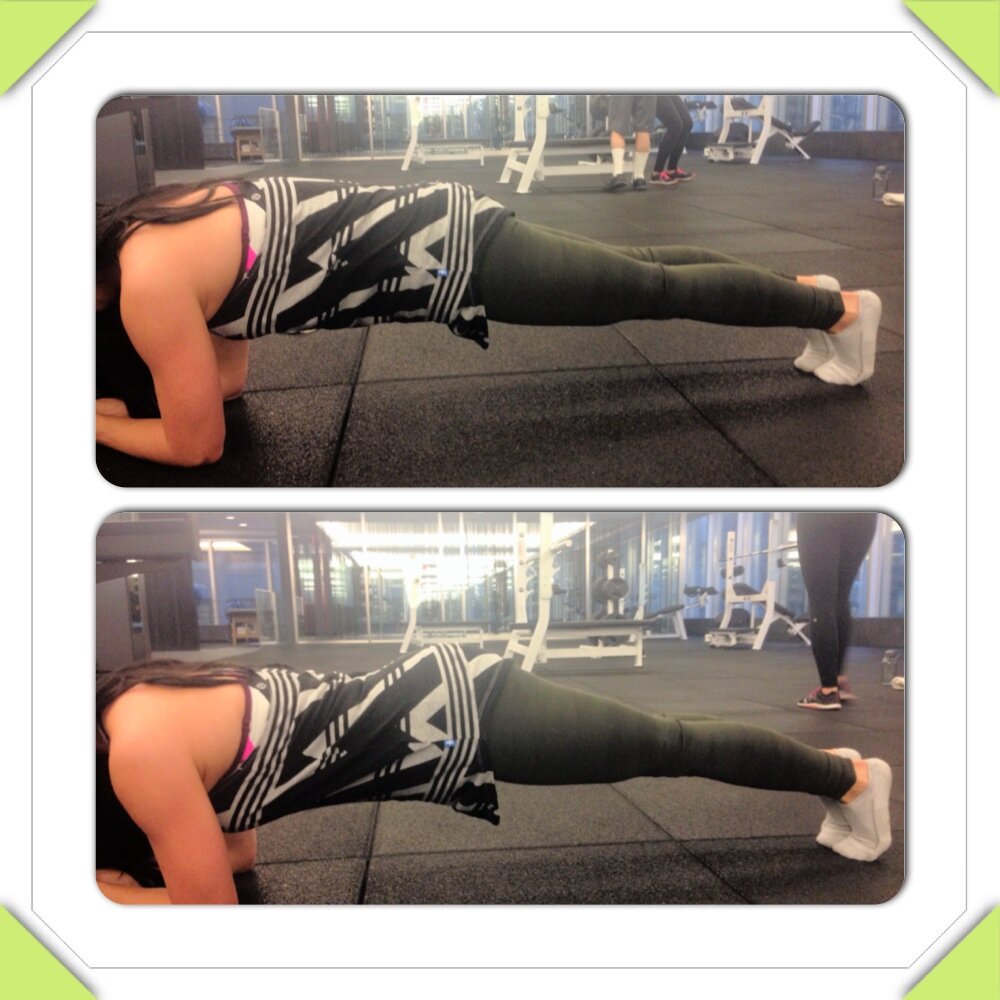
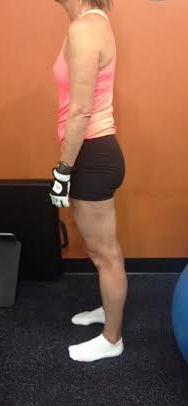
Plain saggy pelvis.
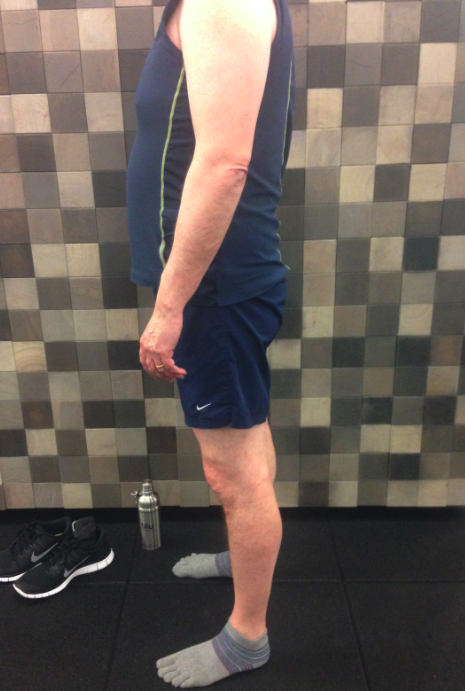
More saggy pelvis
If they squeeze their glutes, what do you think will happen? They will. But they will also shove their pelvis, femurs, etc., forward in order to get that squeeze. Not the idea. The moving part for them is not the hips (clearly); it’s the low back. So addressing stability FIRST is where we should start.
For a large majority of sedentary, average populations we train, training the glutes often seems to not deliver as promised. Sure we get them to fire, but we also can get them hypertonic (too tight), stiff, or chronically sore (been sitting your glute med on a lacrosse ball a lot?). The anterior hips and SI joints start to complain. Think about it. The glutes will do everything you want them to, but it is a relative to your pelvis! A healthy muscle can contract AND relax well. Not just stay in a state of tension. If we think about joint centration*, we have to consider that the pelvis is not meant to be posteriorly tilted. It’s meant to be neutral. So why are we trying to train it in aggressive posterior tilt? Are we looking at the bigger picture in relation to hamstrings, rib cage, and purpose of an exercise? I only ask because I am seeing a lot of saggy pelvises and stressed out multifidi in the name of “glute activation.” Maybe we need to train positions where glute activation is inevitable. I would start with standing and walking on a daily basis, and then lots of prone, supine, or 1/2 kneeling progressions. And avoid talking about aggressive posterior tilt until someone has the motor control to not take the spine along for a ride too.
*Charlie Weingroff defines joint centration as “the ideal balance of mobilizers and stabilizers acting on a joint. Joint centration is also the ideal balance between agonists and antagonists.” What we are doing when we do all this exercise is trying to get back to where our bodies started when we moved effortlessly and smoothly, and then get strong from that base. Have you ever chased a crawling baby? Those suckers can move!
But what about anterior tilt?
Well so far, according to research, anterior tilt is not THAT big a deal. I am talking true anterior tilt. Not anterior tilt combined with shitty posture, breathing dysfunction, tight psoas, rib shear, etc. Shitty posture or rib shear can “look like” anterior tilt to many inexperienced eyes. And what happens when you teach someone to squeeze their glutes hard? They tuck under and lose the spine too. This shitty positioning can lead to a lot of movement problems down the road.
Example of my former colleague. Can you spot the rib shear. Second pic she is “squeezing her glutes” hard. Can you see the alignment issue? She experienced glute hypertrophy when she started deadlifting, squatting, and thrusting, of course, but the true capacity for her body to handle load (and strengthen her structure) is being missed.
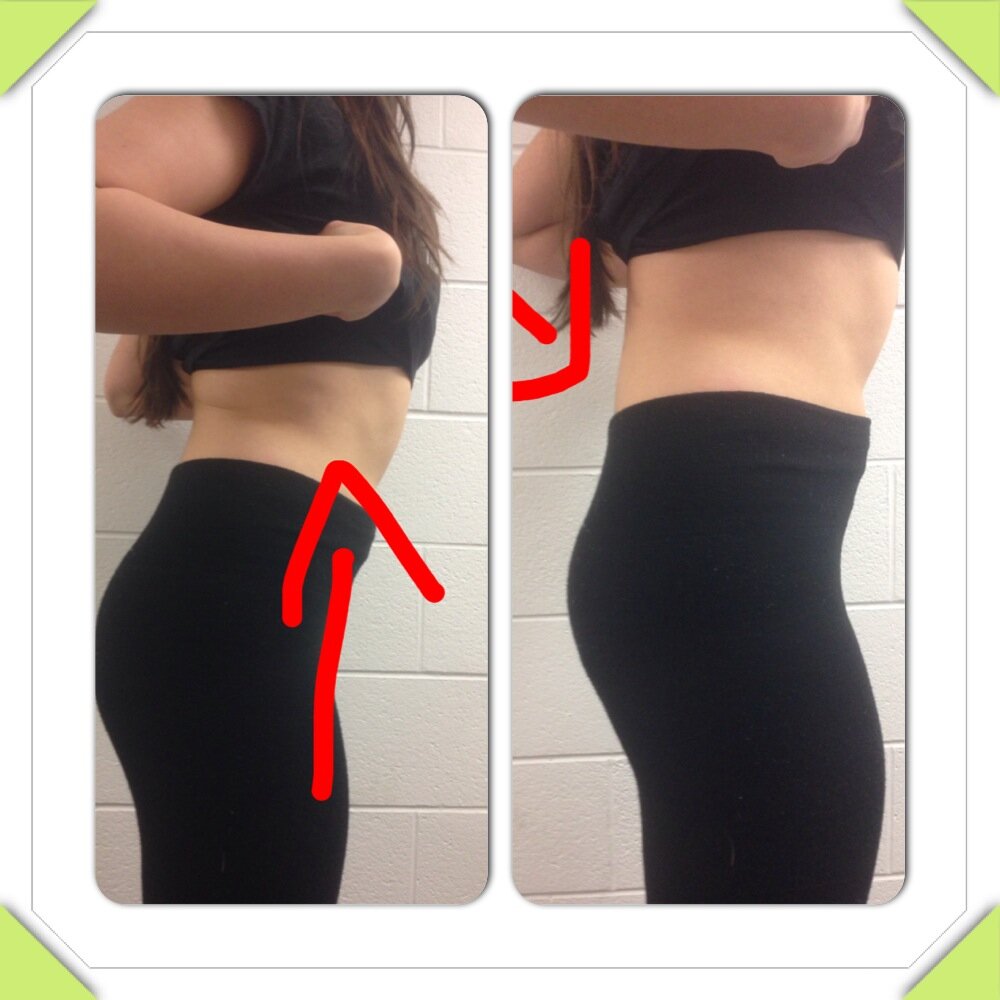
So maybe that is a matter for better coaching, but since I keep running into this trend, I wanted to share my thoughts on it since I see lots of people talking about APT, but forgetting the ribcage, the psoas and the bigger picture of what your glutes DO in movement regularly. I don’t think training aggressive posterior tilt is a good idea especially for those who have looser joints (like a lot of women) or as an across-the-board recommendation for fixing APT. I see lots of complaints about stressed out TFL’s, glute meds, anterior hips, and SI joints. And again, a tight muscle is not a STRONG muscle. A glute that can only contract in posterior tilt is a shortened, tightened glute.
Do you finish your lifts looking like this?
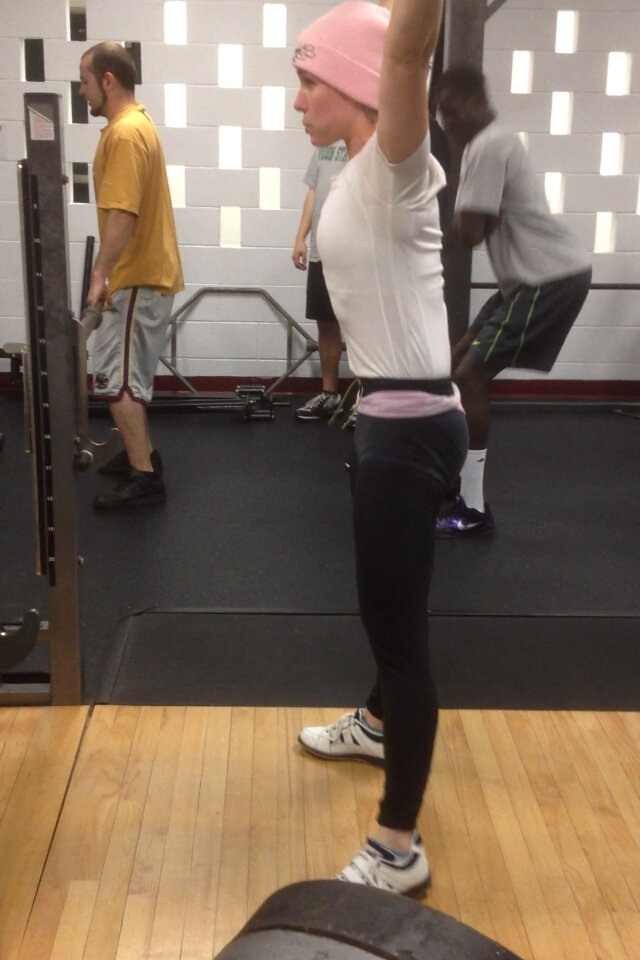

Or this?
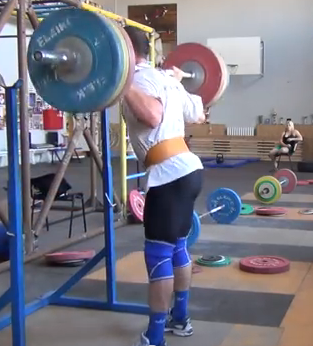

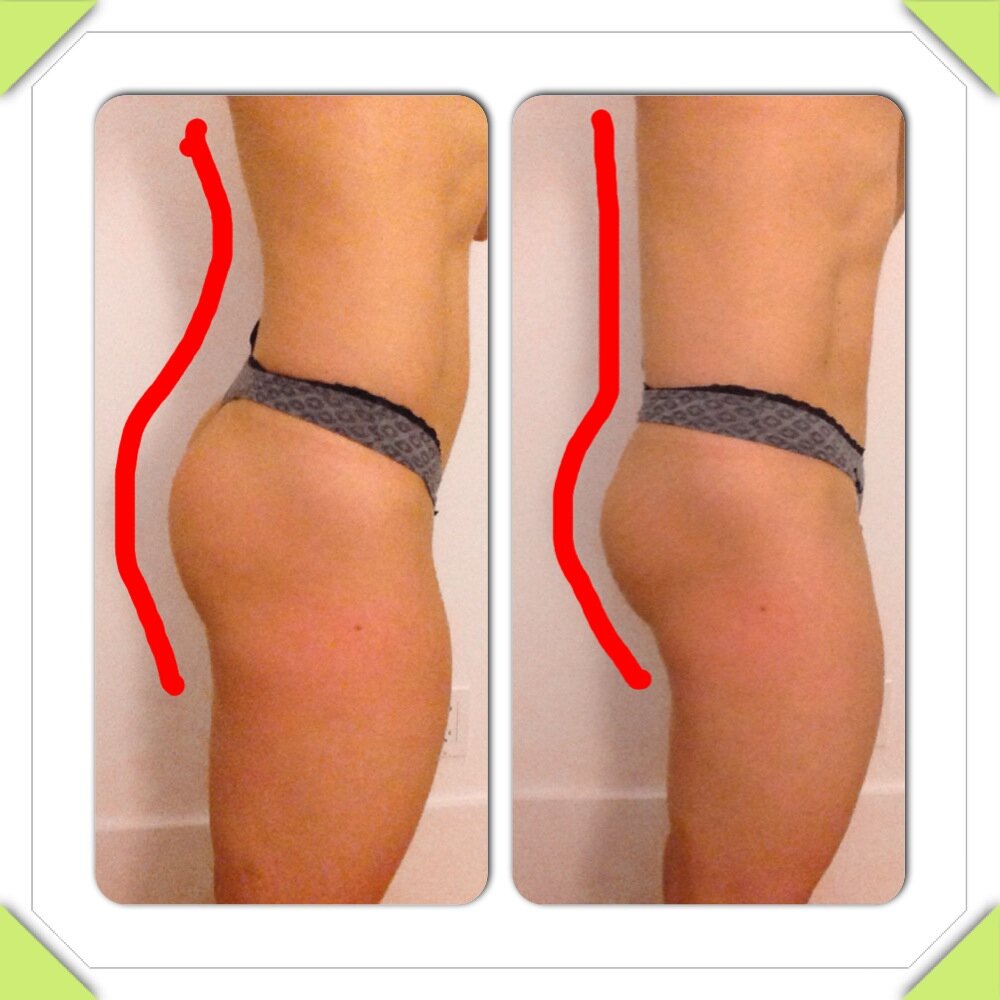
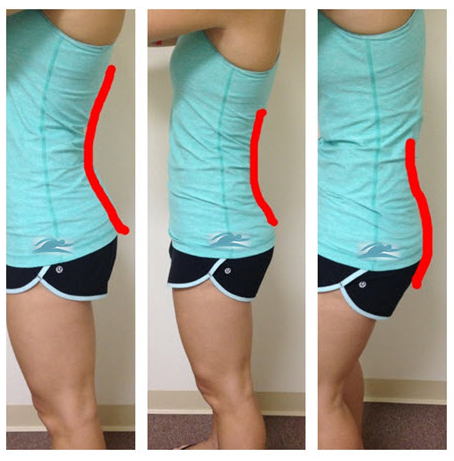
Picture from eliteathletic.com
In my observations (again this is exploratory in nature on my end, I do not conduct research officially), men can afford to train for posterior tilt harder simply because since there seems to be more incidences of true APT, it will just get them closer to neutral.
Achieve your nutrition and training goals with Joy’s expertise and support.
Get started now Maybe that just has more to do with loose joints in general, which is more common in women. This is a generalization, though. I’m not so sure that the way to fix APT is to train PPT under load. In fact, I think that’s missing the forest for the trees. And then, of course, you have to KNOW if APT is actually the issue. As Elsbeth Vaino shared in her article on APT and I agree:
“Another possible culprit is the hamstrings. If they’re weak or stretched long, they can neglect to do their job in keeping the superior posterior pelvis in alignment. And since we’re talking about hip flexors and hamstrings, we also have to talk about glutes. Hip flexor troubles often occur in tandem with weak glutes, and weak hamstrings can be the result of weak or poorly patterned glutes.”
Keeping the pelvis in alignment is a BIG factor. When Bret Contreras and Vaino debated this point, I agreed with her:
Contreras: “I do not see how weak hamstrings can be the result of poorly patterned glutes, as they’re fairly independent. In fact, poorly conditioned and weak glutes typically leads to overburdened and stronger hamstrings.”
Vaino: “I disagree on this point because the relative position of the pelvis is not discussed. And since those muscles act on the pelvis, poorly patterning the glutes doesn’t always lead to stronger hamstrings. If the glutes are always strengthened in posterior tilt (when it is not appropriate) than it can most certainly contribute to tight, short, hamstrings. A lack of ability to maintain a neutral pelvis, but rather a pelvis that is consistently trained in posterior tilt (possibly adding in other factors like tight psoas, rib shear, very strong or overused quads can place the back of the pelvis in a position where the hamstrings are tight and shortened (tension wise) but where the rib shear gives the appearance of APT. In this case the functioning of the glutes is paramount as they are the muscle that has the most influence on the position of the pelvis when properly patterned.” (3)
Katy Bowman explains:
“Rib shear, as pictured above, is caused by the anterior (forward) displacement of the ribcage. This displacement causes the lower thoracic vertebrae to forward relative to the lumbar vertebrae below, creating what looks like hyperextension. Only it’s not hyperextenion. It’s not extension at all. It’s vertebral shear. Which might sound like a simple argument in semantics, only these are two entirely different physical motions that require entirely unique corrections. (4)
Tucking the pelvis shortens the pelvic floor as well. Tucking the pelvis loads the body anteriorly versus posteriorly (aren’t we trying to “strengthen” the posterior chain?) Then we need to allow it to get strong in proper alignment. Tucking the pelvis to strengthen the glutes is not how the glutes work in basic movements like sprinting, squatting, lunging, climbing stairs – so why are we trying to get a “bigger” glute contraction? Seems to me you wouldn’t want to train for strength of a muscle when it puts a joint in an aggressively un-neutral state.
If all roads lead to neutral, what YOUR body is neutral at (which can be determined through bony surfaces) – doesn’t it make sense to make sure we know what we are seeing?
“Spinal curve is a tricky thing because although there is no absolute value of curvature that is appropriate for every person, there is a curve relative to one’s body parts that needs to be exact, in order to ensure proper vertebral loading. People get confused when you talk about absolute vs. relative measures because they misinterpret that anatomical variability means that there is no “one way” to be. Only there is. You just need to learn how to quantify a relative value — that is the objective points and geometrical positioning, relative to one’s own body parts.” (5)
I think it’s important to distinguish between femur acting on pelvis, pelvis acting on femur, pelvis in relation lumbar. Ideally, we are looking for plenty of stability between lumbar and pelvis (which doesn’t mean trying to flatten it out) and femur sockets rolling around happily in superman kicks and sprints.
Talking about neutral pelvis. We often hear about anterior tilt and posterior tilt, but what about NO tilt? Forget what you think you “have” at the moment, and let’s define neutral pelvis: Neutral pelvis used to be defined as when the ASIS and PSIS lined up on a horizontal plane. Later it was defined as the ASIS (your “hip bone”) lining up with the pubis symphysis (“vagina bone” or in men “family jewels bone”). (1) Don’t worry. Here’s some pics:
Can you find neutral pelvis?

A = Anterior
P = Posterior
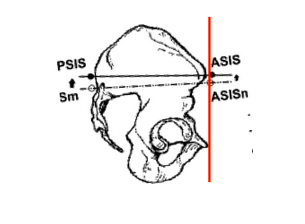
Katy Bowman’s wonderful drawings from the blog post There is No Illiopsoas:


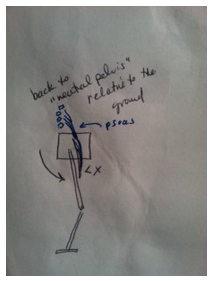
Concluding thoughts:
1. Maybe we need to get better at distinguishing between true APT, a tight psoas with rib shear/spinal shear, wonky breathing patterns, or true hyperextension of the lower back. These can all be associated, but it’s safer to ask: “What needs stability and what needs mobility?” If the goal is to create movement where it’s needed, then first you have to create stability where it’s needed. Dr Perry Nickelston of Stop Chasing Pain said this in reference to keeping your brain feeling “safe” about movement and not needed to send pain signals: “…when people ask me if it’s a mobility or stability problem, my answer is always…’yes it is, but stability is the secret sauce.’ “
Usually, that means addressing breathing and motor patterns to train the core to do its job: keeping the torso on top of the pelvis. Neutral pelvis will affect everything on up, and everything down low. Have a lot of trap/neck tightness? Maybe you to need to rethink your pelvic alignment. Are your glutes max and med always tight and triggerpointy (especially higher up near your low back)? Maybe they don’t need more activation; they need some alignment.
2. Look at the pelvis! A neutral back has curves. A lifter should stay tall when finishing lifts, even when squeezing their butt hard. If they can’t squeeze their butt hard without tucking the spine under, well read No. 1 (I was/am very guilty of this). Can you spot anterior pelvic tilt versus rib shear? What about hip extension versus lumbar flexion? Why are we trying to flatten out the lumbar spine? Can you spot tight illiacus versus tight psoas, and do you recognize the different roles they play versus just the hip flexors?
3. Movement is the goal, not muscles. It’s not muscles, and then movement. This applies no matter how you train. With good movement, the muscles naturally act in the ways they are meant to, moving the joints through ranges of motion. There is nothing wrong with training for hypertrophy in a more specific way, just remember: Your body knows movement, not muscles. Movement is a full-body concept.  Training your glutes – in my opinion – needs to be more than just trying to deadlift and thrust. Honestly, I think a lot of people are not properly preparing their bodies for load through good movement. You can squeeze your ass in a hip thrust until the cows come home and experience some hypertrophy, but that doesn’t necessarily make your body more “athletically intelligent.” I made that term up, but what I mean is lifting doesn’t just magically enhance your movement. Maybe we need to redefine the word strength. Strength is not a number, and I think a lot of people are unprepared to throw a barbell on and hump away. It just might not be obvious right away. Cause hey, our bodies get pretty good at compensating.
Training your glutes – in my opinion – needs to be more than just trying to deadlift and thrust. Honestly, I think a lot of people are not properly preparing their bodies for load through good movement. You can squeeze your ass in a hip thrust until the cows come home and experience some hypertrophy, but that doesn’t necessarily make your body more “athletically intelligent.” I made that term up, but what I mean is lifting doesn’t just magically enhance your movement. Maybe we need to redefine the word strength. Strength is not a number, and I think a lot of people are unprepared to throw a barbell on and hump away. It just might not be obvious right away. Cause hey, our bodies get pretty good at compensating.
Good movement is not about activating one muscle in any specific way. If you want good muscles, start with good movement. Period. The sooner you realize this, the sooner you will avoid nagging issues. I’ll be the first to say it. Squatting 250 didn’t mean shit really, because in the end, heavy training with poor movement (though I didn’t realize it at the time) made my body dumber in an athletic sense, not smarter. And poor movement is about motor patterns, timing, and how the pieces fit together. You might not be able to connect the dots for awhile, but if you don’t respect movement, you will run into problems. That is a guarantee. I was just talking about this with my boss Geoff Girvitz, and he has some really good concepts that hopefully he will write about soon in this marriage of movement and strength. On the one hand, we have people screaming about “just get a barbell on your back” and others doing everything on all fours (a clear exaggeration) and rolling around like babies. Can they reconcile. FOR SURE. At the end of the day, your body/brain knows one thing: how you move. This conundrum is more about the changing demands (or lack of) on our bodies nowadays.
We see a lot of movements that put people in 1/2 kneeling, quadruped, or lying down positions to “hit muscles better.” But the body is meant to move largely in an upright manner. Think about it. But the epitome of athleticism is not your deadbug or your glute bridge. It’s your sprint. It’s your jump. It’s your squat. It’s your press. It’s your pullups. It’s your ability to change direction and explode.
Want a strong butt? Start with aiming to move more with a neutral pelvis. Address stability and alignment before adding barbells. If you think this means creeping around like a wimp, afraid that your little toe is pointing in the right direction, well you don’t belong in this discussion.
For good examples of training programs that get you to move well, lift heavy, and actually train to make your body more athletic overall, come visit Bang Fitness, 610 Queen St West, Toronto.
“Keep training your mind and learning because it will always change what you see.” – Dr Perry Nickelston
“Biology is not a fan of using exercises in lieu of movement.” Katy Bowman
1.) http://www.teamusa.org/USA-Synchronized-Swimming/Features/2013/July/24/Understanding-Neutral-Spine-Position-and-the-Core-Muscles
2.) http://www.ncbi.nlm.nih.gov/pubmed/24218079
3.) https://www.t-nation.com/training/trouble-with-the-tilt-correcting-apt
4.) http://www.katysays.com/neutral-pelvis-2/
5.) http://www.katysays.com/neutral-pelvis/
